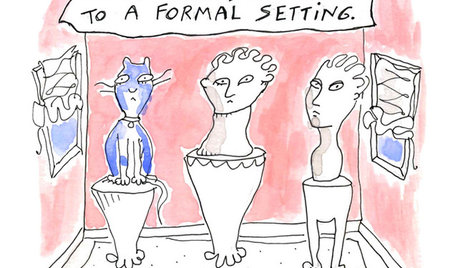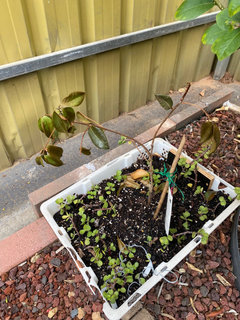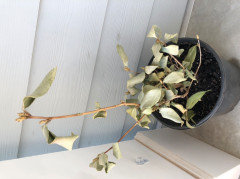Camellia dying, help please!
nicole93089
13 years ago
Featured Answer
Comments (34)
luis_pr
13 years agonicole93089
13 years agoRelated Professionals
Cary Landscape Architects & Landscape Designers · Tomball Landscape Architects & Landscape Designers · Brentwood Landscape Contractors · Buford Landscape Contractors · Farmington Landscape Contractors · Fort Wayne Landscape Contractors · Las Vegas Landscape Contractors · Newnan Landscape Contractors · Olympia Landscape Contractors · Pahrump Landscape Contractors · Vancouver Landscape Contractors · Waipahu Landscape Contractors · West Haverstraw Landscape Contractors · Greenfield Landscape Contractors · Eastlake Landscape Contractorsluis_pr
13 years agonicole93089
13 years agoluis_pr
13 years agolaura171533
13 years agocatboy
13 years agonicole93089
13 years agojredmond1_carolina_rr_com
13 years agoLinda Leon
6 years agoluis_pr
6 years agolast modified: 6 years agoLinda Leon
6 years agoluis_pr
6 years agolast modified: 6 years agomj61858
6 years agoluis_pr
6 years agolast modified: 6 years agomj61858
6 years agoBen the Man
6 years agomj61858
6 years agoluis_pr
6 years agolast modified: 6 years agomj61858
6 years agoCat
6 years agoCat
6 years agoluis_pr
6 years agoViet Nam
2 years agoluis pr
2 years agoluis_pr
2 years agoCathy Anderson
2 years agoluis_pr
2 years agolast modified: 2 years agomellencita25
2 years agoluis_pr
2 years agolast modified: 2 years agomellencita25
2 years agoCathy Anderson
2 years agoluis_pr
2 years ago
Related Stories

GARDENING GUIDESGreat Design Plant: Ceanothus Pleases With Nectar and Fragrant Blooms
West Coast natives: The blue flowers of drought-tolerant ceanothus draw the eye and help support local wildlife too
Full Story
SUMMER GARDENINGHouzz Call: Please Show Us Your Summer Garden!
Share pictures of your home and yard this summer — we’d love to feature them in an upcoming story
Full Story
HOUSEPLANTSMother-in-Law's Tongue: Surprisingly Easy to Please
This low-maintenance, high-impact houseplant fits in with any design and can clear the air, too
Full Story
PETSHow to Help Your Dog Be a Good Neighbor
Good fences certainly help, but be sure to introduce your pup to the neighbors and check in from time to time
Full Story
ORGANIZINGHelp for Whittling Down the Photo Pile
Consider these 6 points your personal pare-down assistant, making organizing your photo collection easier
Full Story
BATHROOM WORKBOOKStandard Fixture Dimensions and Measurements for a Primary Bath
Create a luxe bathroom that functions well with these key measurements and layout tips
Full Story
HOUSEKEEPINGWhen You Need Real Housekeeping Help
Which is scarier, Lifetime's 'Devious Maids' show or that area behind the toilet? If the toilet wins, you'll need these tips
Full Story
DECLUTTERINGDownsizing Help: How to Edit Your Belongings
Learn what to take and what to toss if you're moving to a smaller home
Full Story
LIFEDecluttering — How to Get the Help You Need
Don't worry if you can't shed stuff and organize alone; help is at your disposal
Full Story
MOST POPULAR7 Ways Cats Help You Decorate
Furry felines add to our decor in so many ways. These just scratch the surface
Full StoryMore Discussions











luis_pr